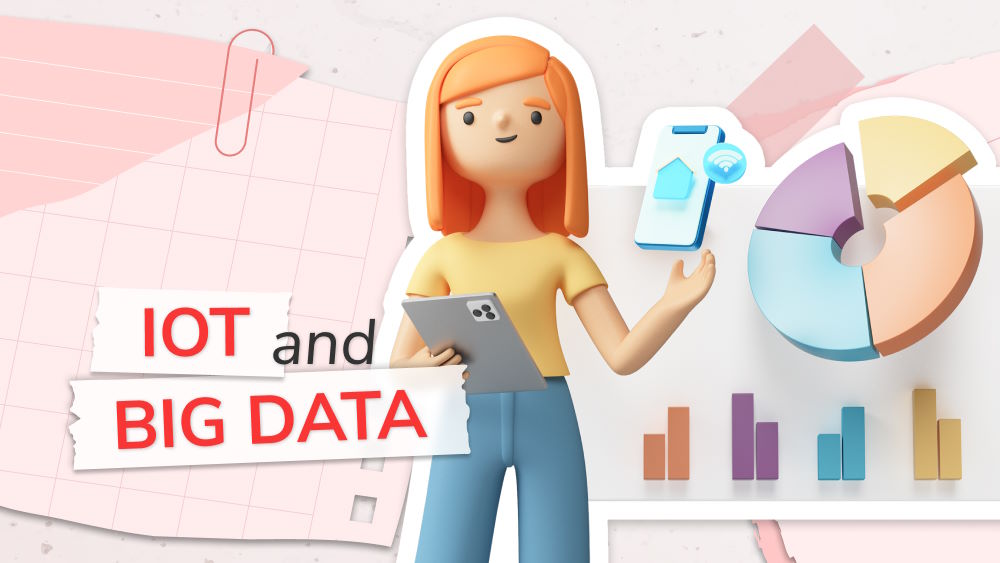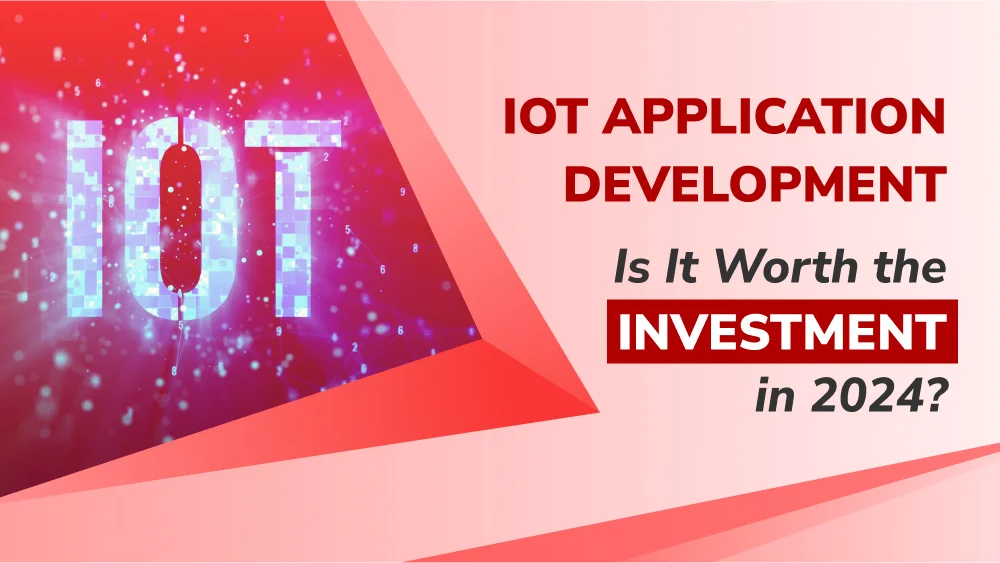Gain Valuable Insights into the IoT and Big Data Combination

Content Map
More chaptersDid you know that by 2030, there will be 17 billion IoT-connected devices in the world? This data demonstrates the growing widespread application of IoT (Internet of Things) in today’s modern technology market landscape. As more devices and objects interact with each other over a connection to the Internet, increasingly real-time data is being collected.
These IoT data, therefore, are the biggest information set that is grouped on Internet connectivity, making the IoT the largest provider of big data. The intimate relationship between IoT and big data also emerges from here. The relationship between IoT and big data technologies helps your business grow in many ways. Namely how? Deep dive into this latest article with us.
What is the Internet of Things (IoT)?
The Internet of Things (IoT) is the physical objects’ network that takes advantage of the connection of machines and sensors to exchange data in real time with other IoT devices based on the Internet. IoT devices can refer to anything from wearable fitness trackers to smart home devices to industrial equipment in factories.
The emergence of the Internet has facilitated the strong development of IoT over the past few years. By gathering and analyzing collected data from those physical objects, IoT opens a world of possibilities where such technology can benefit both individuals and businesses.
The Internet of Things automates the user’s daily tasks, making them “smart” and capable of performing intervention actions while minimizing human interaction. For example, devices like smart sockets can monitor power usage, and smart thermostats can provide better temperature control. What about benefits for business? IoT sensors monitor equipment and alert business of maintenance needs, while smart logistics systems reduce fuel consumption.
What is Big Data?
True to its name, big data represents large volumes of information and data sets that are defined by three Vs characteristics, including volume, velocity, and variety. Big data can come from many different sources like social media posts, the Internet of Things, sensors, etc. Because the number of people using modern technology is increasing, the data storage of big data is increasingly fostered over time. Instead of wasting this data source, businesses can gain huge benefits in terms of users’ insights and market trends when extracting and analyzing data sets.
The value of big data lies in whether the business can successfully handle the data visualization process, not the raw data itself. However, due to the complexity and massive volume of both structured and unstructured data, humans cannot process these valuable data in the usual way with traditional methods for processing and analyzing information. Fortunately, big data analytics can now turn into actionable insights thanks to computing advancements such as artificial intelligence (AI) and machine learning (ML) technologies.
How Big Data and The IoT Work Together?

Although Internet of Things and big data are two completely different concepts, they complement each other in the case of synthesizing and processing information to serve beneficial purposes for businesses. If IoT acts as the main source of data for big data, in turn, big data is a collection of vast amounts of information collected from different sources, including IoT.
Because IoT data is mostly real-time data based on customer behavior of connected devices, it can be said that customer data coming from IoT networks gives better quality of detail and real-time than such information from some other sources. However, it’s all raw data. Besides, the sheer volume of data generated by IoT user devices can be overwhelming if the business only applies normal analytical methods and does not use the right tools and processes in place.
To fully unlock the potential of IoT data and turn them into valuable insights, business owners need to go through a process where this information is extracted in a relevant way. Normally, IoT big data processing follows these steps.
- Data collecting: The automatic interaction between physical devices connected to the Internet in a certain period will help businesses collect large amounts of data from customers using your software products.
- Data storage: The collection of above-collected pieces will be assembled into files within the big data database and used according to the needs of the business.
- Data analysis: Businesses use analytical systems to automate the process of analyzing this massive amount of information.
- Reporting: Enterprises group the data after analysis by categorizing it into three different types of insights, including descriptive analytics (how connected devices perform in real-time), diagnostic analytics (why connected devices produce these outputs), predictive analytics (how connected devices function in the future), and prescriptive analytics (how to impact predicted things); thereby generating reports for software product development and tuning needs and improving decision making.
Benefits of the IoT and Big Data Relationship

Improve Customer Experience Based on Real-time Data
There are many factors that influence a business owner’s decision-making process. In particular, users play the most important role because the ultimate purpose of a software product is still to serve the needs of target customers. User needs are different from time to time. That is also the reason why real-time data products by IoT networks have such great power.
Real-time insights reflect the current state of the user and capture any special events that happened during the product experience. By collecting and analyzing data related to user habits at the time of data generation without delay, the business understands the customer’s wishes and pain points and makes corresponding improvements to enhance the overall user experience.
In addition to making improvements, most found on e-commerce platforms and social media sites, big data collected from the vast IoT network also delivers personalized content, advertisements, and recommendations in real time based on user browsing history.
Predict the Latest Trends
People’s lives are increasingly diversified partly because of the constant development of the latest trends created from time to time. And the first business to catch future trends in the field will be the most prominent business in the eyes of customers. Understanding the importance of keeping up with trends, existing organizations are using the superiority of Internet of Things and big data combinations to predict and pioneer trends to attract users.
Specifically, big data analytics use machine learning algorithms to predict future trends based on historical data powered by largely the same data across multiple connected devices. By analyzing past trends and patterns, businesses can make particular next-trend predictions.
Real-time data from IoT networks is also valuable information to help businesses respond quickly to emerging trends. For example, sensors can be used to monitor environmental conditions. In the event of an adverse event such as high humidity, or even the risk of a thunderstorm, IoT data helps to send a signal to customer devices and provides early warning of potential issues.
Increase Return on Investment (ROI)
Any business, when operating, is interested in ROI software, also known as the Return on Investment of a software product. The higher the ROI, the more profitable your product will be. There are many factors that affect ROI depending on the type of product of your business, such as delivery time, employee productivity, customer satisfaction, etc. Fortunately, with the help of the strong link between IoT and big data analytics, massive data sets are provided with full enterprise support in two respects.
First, IoT and big data help you better ROI calculating. The number of IoT-connected devices is huge. Instead of collecting feedback from customers using traditional methods like surveys, IoT automates this process quickly when collecting real-time data, tracking performance metrics, and returning business metrics the closest to reality. This provides businesses with accurate and constantly updated metrics for the ROI calculation. Second, with the help of those metrics, business gains greater visibility into their operations and make the necessary adjustments where they can reduce costs and increase efficiency.
Final Thoughts
Besides numerous benefits, there are still existing with a bunch of challenges in IoT with big data analytics. The data collected from connected devices are considered facts about products and users. Facts don’t lie. However, based on its complexity, big data may be deceiving and does not even bring value to the business if analyzed incorrectly.
Therefore, data scientists need to take special care in classifying and extracting data of errors, duplicate information, and a number of other anomalies to ensure true insight finding and seamless data tracking. Don’t be too greedy in gaining data. Limit them to your business needs by locating reliable data sources, narrowing the focus, and identifying only needed data.
Of course, incorporating IoT and big data into business operations can be a daunting task for enterprises, especially startups. We, Orient Software, understand the difficulties and desires of our customers after decades of working in the technology industry. Not only provide a wide range of services, but we also act as consultants, helping you to specialize in the software product development process. Contact our experts for better advice.







